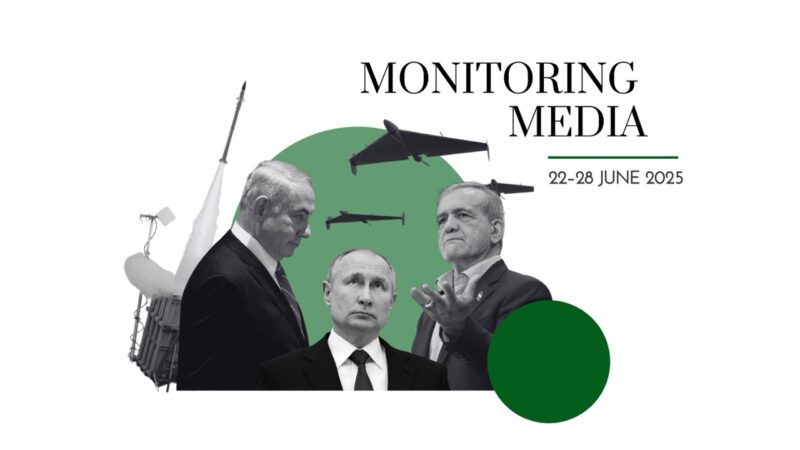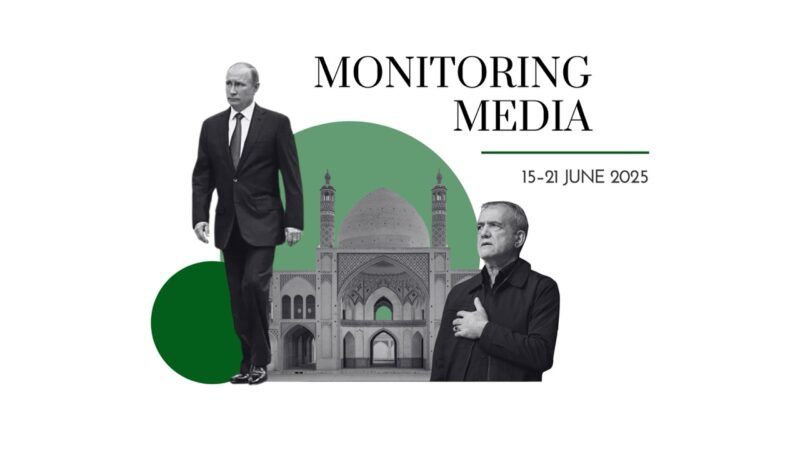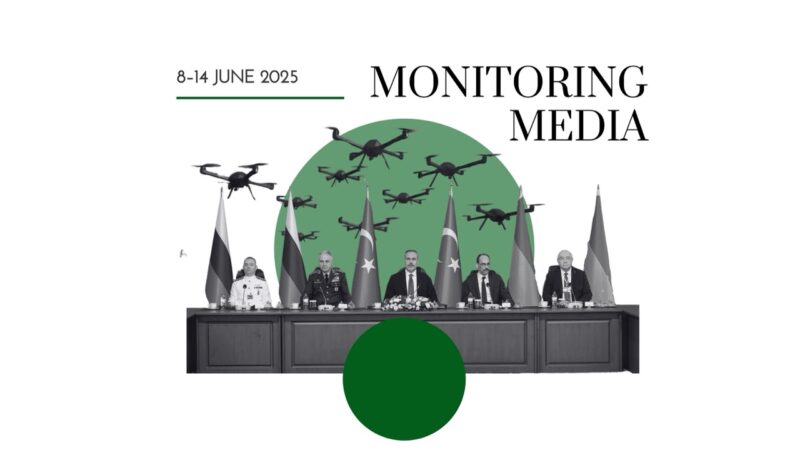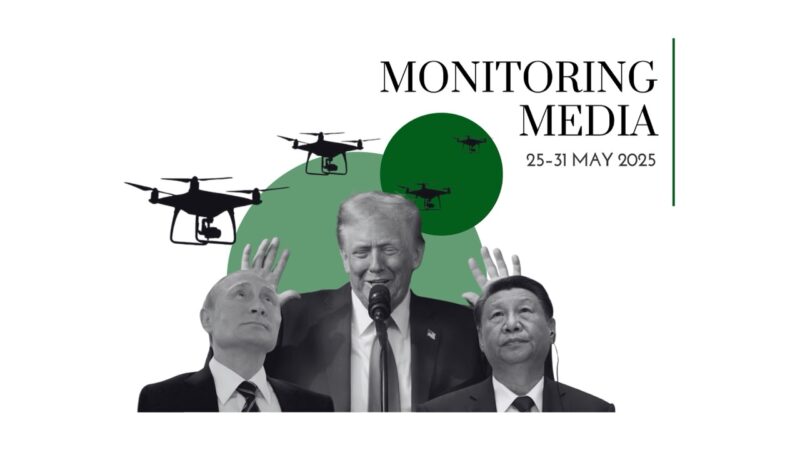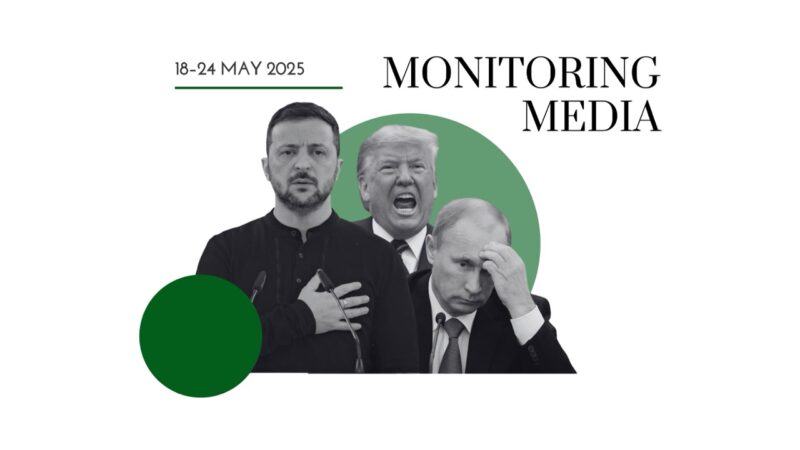Ukraine’s European integration is steadfast, but not as fast as it could be

CIUS weekly report on North American media coverage of Ukrainian affairs, 28 January–3 February 2023
Three publications (The Conversation, The New Yorker, and National Review) were selected to prepare this report on how the situation in Ukraine has been portrayed in the North American press during the past week (28 January–3 February 2023). The sample was compiled based on their impact on public opinion as well as on their professional reputation, popularity among the readership, and topical relevance. These three publications represent centrist and conservative viewpoints on the political spectrum.
This report covers only the most-read and relevant articles about Ukraine, as ranked by the respective North American publications themselves in the past week. Its scope covers promoted articles on home pages and articles from special sections on Ukraine, with the hashtag #Ukraine, from the paper editions of the publications, and about Ukraine from opinion columns and editorials.
Topics featured in the selected articles:
- Ukraine’s current affairs: F-16 jet fighters may eventually appear in Ukraine’s armed forces; female soldiers are changing social perceptions of gender roles in Ukraine; the scale of collaboration by Ukrainians with Russians on occupied territories has yet to be investigated; Ukraine’s EU accession is unlikely to be completed in the next two years;
- The world and Ukraine: the exact number of casualties in the Russian and Ukrainian armies is hard to calculate; increasing its support to Ukraine is in the USA’s own national interest;
- Russia at war: Russia seems to have withdrawn from its last nuclear nonproliferation treaty with the US.
Main arguments:
F-16 jet fighters will not become a wonder weapon, but will definitely contribute to Ukraine’s victory. James R Pritchett (The Conversation) writes that since the beginning of the escalated invasion Ukraine’s strategic work with the West has been wise and quite effective. While remaining on the defensive, Ukraine has assertively lobbied and patiently waited for deliveries of Western weapons, which it has been able to “turn into a decisive advantage on the battlefield.” Having started with Javelin portable anti-tank missile systems a year ago, Western partners eventually agreed to supply Ukraine with Leopard 2 heavy tanks in late January 2023. As of today, discussions have even commenced among the NATO members to unlock supplies of F-16 jet fighters to Ukraine. If successful, “a fleet of F-16s, modernized to use current NATO equipment and supported by access to maintenance and parts, would be an extremely valuable addition to Ukraine’s air force and could boost Ukraine’s capability to attack ground targets—including Russian air defences, reducing that side of the air-defence stalemate.” Pritchett writes that after a year of fighting, the air of Ukraine remains contested. Neither side—which is shocking considering Russia’s much larger and more experienced air fleet—has been able to secure unopposed flight of its jet fighters over enemy lines, which impacts the operations on the ground. According to Pritchett, the F-16s in Ukraine’s service will not be a wonder weapon, but they will help to neutralize Russian Su-27s and MiG-29s as well as bring Ukraine’s air-defence doctrine closer “to the more sophisticated principles and strategies currently used by NATO countries.”
Women in Ukrainian armies are changing the social perception of traditional gender roles. Jennifer Mathers and Anna Kvit (The Conversation) write about the experiences of female soldiers in Ukraine’s armed forces since the 1990s and highlight that in light of Russia’s full-scale invasion, social attitudes to women in the military have changed. Thousands of them have now joined on the front lines: “According to Ukraine’s deputy minister of defence, Hanna Maliar, by the summer of 2022 more than 50,000 women were employed by the armed forces in some capacity, with approximately 38,000 serving in uniform.” Mathers and Kvit define Ukraine’s society as one with “strong patriarchal traditions, especially in the defence sector”—with indicators, however, that show erosion of the traditional perceptions of gender roles. In particular, female soldiers have started regularly appearing in social media communiques posted by the Ministry of Defence; the number of female officers in Ukraine’s army is nearing 8,000, and in 2021 National Defenders’ Day was renamed as the Day of Men and Women Defenders of Ukraine. At the same time, female soldiers face numerous challenges; they “still have to overcome scepticism from commanders and fellow soldiers about their commitment and abilities, obstacles to promotion and career development, as well as difficulties with practical…matters such as getting uniforms, body armour and boots that fit.” In addition, female soldiers are more exposed to sexual violence, and some have declared that they’d prefer death to Russian captivity. Mathers and Kvit consider that after the fighting is over, female soldiers will likely remain in the ranks of professional defenders because “just as public attitudes towards women in the military are changing quickly in Ukraine, so too are the country’s laws and government policies.”
Ukraine investigates cases of collaboration on previously occupied territories. Joshua Yaffa (The New Yorker) offers an expanded reportage about life in Ukraine’s recently liberated territories—specifically, about attitudes toward and prosecution of collaborators with Russian invaders. Among other things, Yaffa highlights that in the town of Izium “residents agreed to collaborate for a number of often overlapping reasons: fear, pro-Russia sympathies, opportunism, the hope of doing something productive for the city.” Through everything they did Russians demonstrated that the takeover of Izium was permanent and irreversible. They even planned to distribute Russian passports and hold a referendum on the occupied territories acceding to Russia. That being said, “power dynamics were fluid and hard to parse.” Yaffa recounts a few stories about local residents who decided to join patrol teams, volunteer groups, or local administrations on the Russian side. These stories cover details of the residents’ activities during the occupation, including illegal ones, as well as scrutiny of these activities by Ukrainian investigators who returned to Izium on 10 September. Yaffa adds extra depth to the stories of his protagonists by comparing them to cases of collaboration during the Second World War. He also writes about Russian educational “reforms” which taught schoolchildren in occupied territories “that Russia and Ukraine were historically united and that Ukraine has no legitimate claim to independence.” Finally, Yaffa highlights that in Izium, “the lingering trauma of occupation left many residents with conflicting emotions. Relief and gratitude for the city’s liberation commingled with a feeling of grievance and offense that the relatively well-off and well-connected [Ukrainians] had managed to flee.” In sum, the loyalty of Izium residents does not invariably lie with Ukraine.
Ukraine is unlikely to join the EU under a fast-track procedure. Stefan Wolff (The Conversation) highlights contradictory visions of Ukraine’s European integration put forward by Kyiv and Brussels: “Kyiv has made it clear that it wants to join the fast track for EU membership in two years—prime minister Denys Shmyhal said as much in an interview on January 30. But getting Brussels to commit to any definitive timeline—let alone 24 months—is highly unlikely.” Instead, Wolff believes that cooperation and negotiations between Ukraine and the EU in the nearest future will focus on the “concrete, short-term deliverables that Ukraine will get out of its ever closer relationship with the EU.” These include, for instance, continuous financial support for Ukraine’s humanitarian and military needs. As of late November 2022, EU members committed almost €52 billion of aid to their eastern neighbour. Even bigger sums will be invested after the fighting is over, to boost national reconstruction. Wolff also highlights that in order for any state to join the EU, it has to meet rigorous requirements, which looks especially challenging during wartime. Apart from this, Wolff discusses the EU-Ukraine summit on 3 February, where Brussels emphasized its openness to Ukraine’s membership and outlined new fields of tangible integration, while Kyiv reinforced “the narrative that Ukraine not only deserve[d] EU membership but [was] also earning it.” Wolff concludes that “without [the EU’s] support now, there will be no credible membership prospect [for Ukraine] later. But without genuine and visible progress on the latter, the support needed in the short term will not be sustainable.”
Exact casualty numbers among Russian and Ukrainian soldiers are impossible to calculate. Lily Hamourtziadou (The Conversation) opens her article with a statement that “the war in Ukraine is shaping up to be one of the bloodiest of the 21st century, with both sides reported to be losing hundreds of soldiers each day.” However, she also notices differing numbers of casualties as reported by Ukraine, Russia, and international observers, which is related to using these sensitive statistics as a propaganda tool and making each respective side look more victorious than it really is: “Reports of decisive victories or unspeakable atrocities are important in the battle for hearts and minds. Casualty figures are also part of that battle.” The Western partners of Ukraine, in particular Norway and the US, have estimated that up to the first anniversary of the escalated invasion, Russia has lost over 180,000 soldiers; for its part, Ukraine’s General Staff publishes numbers of around 130,000. In turn, Russia acknowledges its death toll at only around 10,000 soldiers (as of August 2022, when such information was last publicly presented). Another reason for the differences is the so-called “fog of war”: it is often impossible to verify casualties accurately, as soldiers may die in hard-to-reach places. Finally, there are complications with counting deaths among civilians, especially those who fought in volunteer forces, joined territorial defence units, or were mobilized very recently. Hamourtziadou concludes that “Whoever ‘wins’ this war will achieve a pyrrhic victory (a win at excessively great cost).”
From a realist perspective, it is in the US’s national interest to continue supporting Ukraine. Rebeccah Heinrichs (National Review) discusses “realist” approaches to US foreign policy and highlights that both camps of American policymakers—those who support delivering more arms to Ukraine and those who are against this—present themselves as “realists” and the only true defenders of American interests. To bring clarity to the issue, Heinrichs provides her definition of a realist. To be a realist is to be aware that
“a final utopian-like global existence is a mirage. The nation-states are the perennial primary global actors, and they are distrustful of other nations. Each nation-state exercises power as it deems desirable based on history, culture, risk assessment, national aims, and ability to execute. Alliances, institutions, and treaties can be useful tools to carry out policies that individual governments may decide are in their respective interests, but such agreements should dissolve when they no longer are.”
In this light, Heinrichs concludes that it is in the “most realistic realist” interest of the US to support Ukraine in its war with Russia, which
“is a top-tier strategic adversary of the United States and is increasingly collaborating with the People’s Republic of China to weaken, threaten, and coerce America and our allies. The US failed to dissuade Vladimir Putin from invading Ukraine, and now Russia is committing gross atrocities as it carries out its national plan to subjugate Ukraine, fracture NATO, and outmaneuver and weaken the United States globally. The realists’ aim should be to empower Ukraine to expel Russia and militarily strengthen NATO’s eastern front.”
Instead, if the US steps back today, it will lead to the surrender of American global power and interests, as well as show a disregard for the challenges of the 21st century.
Susan B. Glasser (New Yorker) also raises the issue of divisions in the US political world regarding the volumes and intensity of aid to Ukraine. On the one hand, according to Glasser, bipartisan resolve in Congress to respond to the horror of Russia’s invasion remains quite strong. On the other hand, the Republican wing—especially the one sharing Donald Trump’s interpretation of the war—“has warned there will be no ‘blank check’ for Ukraine going forward.” There is also a wing of Republicans, led by Nikki Haley, “who believe that the United States has pursued an overly cautious course with Ukraine, balking at doing what is necessary to defeat Russia, and in effect giving in to Putin’s nuclear blackmail.” Glasser concludes that the Biden administration should become more open and responsive to Kyiv’s requests, because “there is only a short window for Ukraine to make decisive battlefield gains before the conflict settles into a grinding war of attrition that could benefit Putin in the long run.” According to Glasser, with its actions in Ukraine the Kremlin has long crossed the US’s red lines, and therefore the time has come for greater decisiveness.
Russia is apparently denying US inspectors access to its nuclear sites. Nina Srinivasan Rathbun (The Conversation) argues that according to the US State Department, Russia has not been complying with the last remaining nuclear arms agreement between the two states—the New START—which was renewed for five years in 2021. For its part, Russia denies the accusations and claims to be open to cooperation. The New START is an “agreement between the US and Russia limiting the development of nuclear weapons and their delivery systems. It allows both countries to regularly, and with limited advance notice, inspect each other’s nuclear weapons arsenals” and thereby prevent an arms race. The US concerns escalated in light of the Kremlin’s recent threats to attack Ukraine with nuclear missiles that could kill “anywhere from 52,000 to several million people” if a major city is targeted. Srinivasan Rathbun, who has researched nuclear non-proliferation, states that “convincing countries to reduce their nuclear weapons stockpiles or renounce the pursuit of this ultimate weapon has always been extremely difficult.” In the Cold War times, cooperation between countries was based on transparency, trust, and acknowledgement of risks of mutual destruction, and it led to a significant reduction of nuclear warheads. Today, the US declared that Russia is denying it access to nuclear sites and appears to be stockpiling missiles in Kaliningrad, its enclave in Central Europe. Srinivasan Rathbun concludes that “if the US and Russia are no longer transparent about their nuclear arsenals and developments, pressure for both countries to develop new nuclear weapons and delivery systems will increase, along with the risk of miscalculations.”
